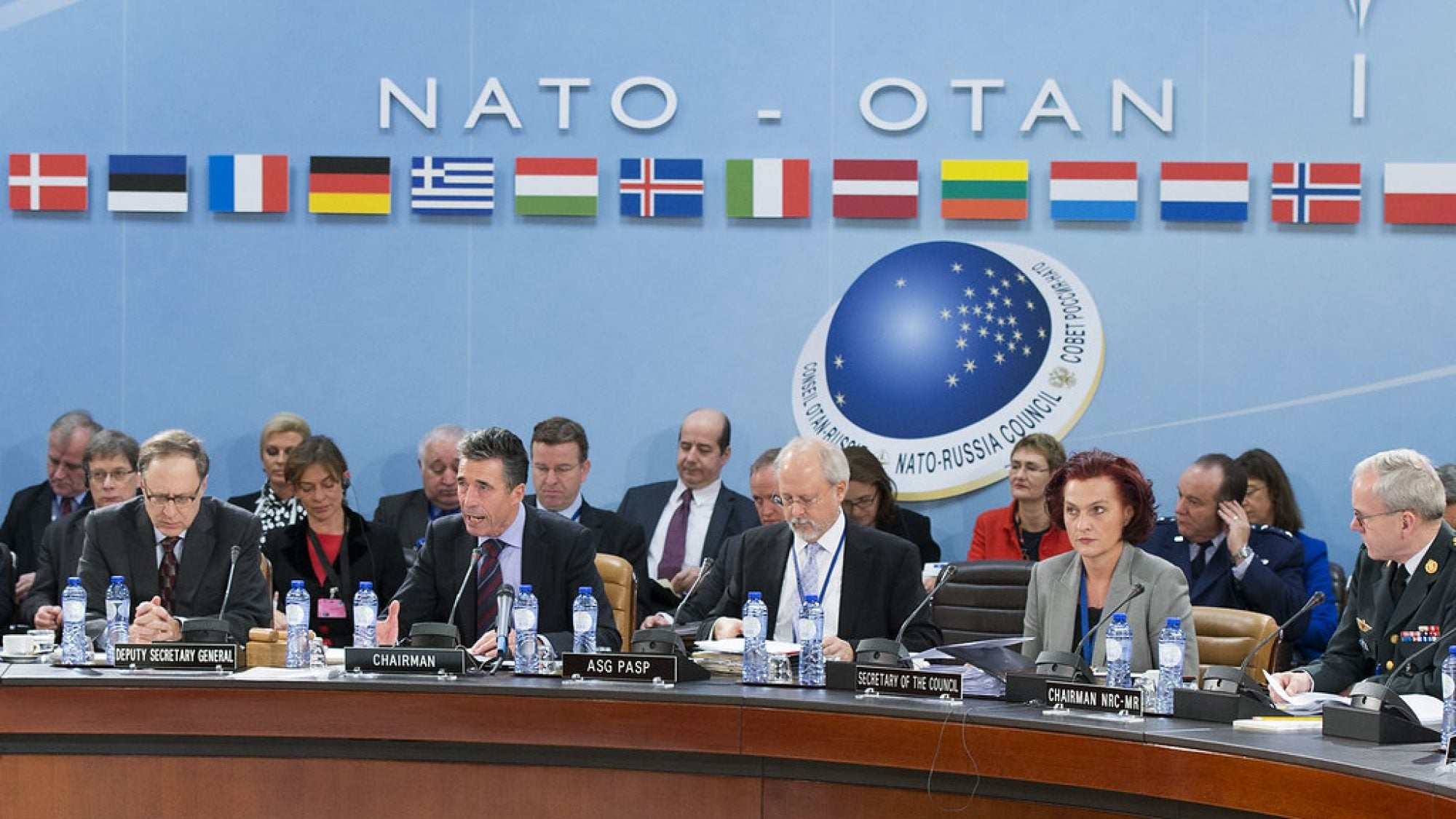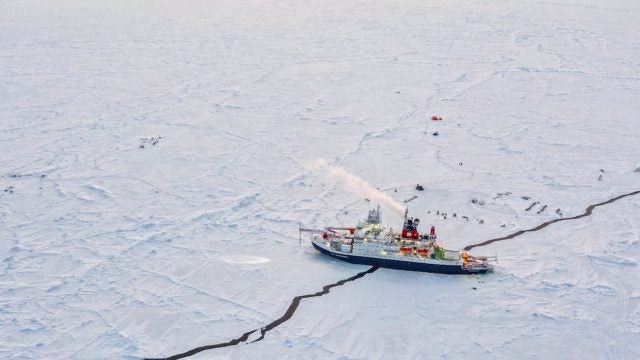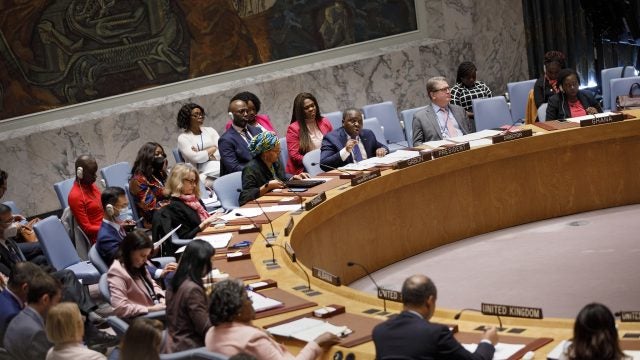
Title: Stabilizing the NATO-Russia Deterrence Relationship
Moving forward, the NATO-Russia relationship will be characterized by deterrence in both the nuclear and conventional domains. NATO should focus on stabilizing its relationship with Russia by enhancing the credibility of its own deterrents.
Introduction
At this historical juncture, policy discussions about the possibility of restarting NATO-Russia dialogue are misguided. Grand discussions about the European security architecture are outdated. While military-to-military contact remains useful to prevent the Russia-Ukraine war from escalating into a NATO-Russia war, they do not increase the likelihood of political dialogue between the opposing parties. Instead, the key question concerns how to practically manage the absence of such dialogue.
NATO members remain divided between those warning against rewarding aggression, such as the Baltic States, and those warning against a spirit of revenge, like Germany and France. Many of the calls for dialogue with Russia are misguided insofar as they somehow try to fast-track dialogue before stabilizing the deterrence relationship. NATO needs to instead prioritize deterrence as prescribed by the 1967 Harmel Report, which defined the alliance’s ‘dual-track’ approach: military deterrence to prevent war should be complemented with political dialogue to reduce great-power tension. If NATO members unite around this dual-track approach, their position of strength could undermine Russia’s confidence that the use of military force serves its foreign-policy interests.
Acknowledging the importance of mutual deterrence for strategic stability, expert recommendations should focus on how to reduce the most immediate risks without prejudice to the possibility of normalizing East-West relations. Efforts to promote strategic stability should thus reflect the extent to which the Russia-Ukraine war has raised the need for deterrence in both the nuclear and conventional domains.
Russia’s Tactical Nuclear Threats
The war in Ukraine has highlighted Russia’s willingness to use the threat of nuclear weapons as a foreign policy tool to enable offensive military action. While the military effectiveness of using tactical nuclear weapons along Ukraine’s extended frontline is disputed, the Russian government sees its nuclear capability as integral to its great-power status and potentially useful for coercion.
Two years of war have seen several incidents of Russian nuclear blustering to deter Western intervention. Russia recently conducted a tactical nuclear exercise, which Russia explicitly linked to statements by Western leaders about greater involvement in Ukraine. In doing so, Moscow sent a message that it was prepared to escalate in retaliation to Western involvement. This strategy is encouraged by notable Russian security policy intellectuals, who argue that Russia should exploit NATO’s adversity to pain and bring the war in Ukraine to a favorable conclusion by threatening limited nuclear strikes. Russia’s numerical advantage in tactical nuclear weapons relative to NATO only heightens this concern.
Russian President Vladimir Putin’s threats to use nuclear weapons have deterred NATO from intervening on Ukraine’s behalf. Apart from the Baltic calls for a no-fly zone, Polish calls for a peacekeeping force at the early stage of the war, and French President Emmanuel Macron’s more recent venting of possible deployment of troops for training in Ukraine, the alliance never came close to directly intervening due to fear of escalation from a nuclear-armed opponent. Ukraine’s successful counteroffensives in Kharkiv and Kherson in late 2022 ignited Western concerns that Russia would use nuclear weapons in Ukraine if it believed they held significant military or political value. The United States, along with China and the G-20, thus engaged in diplomatic efforts in late 2022 to warn Russia of the consequences of using nuclear weapons in Ukraine. Russia’s blustering cooled as a result, but its recent nuclear exercise gives reason for deeper reflection on the circumstances under which it might consider using nuclear weapons.
Russia does not share the common Western perception that even limited nuclear escalation should be avoided at all costs because it could easily escalate into an all-out nuclear exchange. Russia’s high-risk full-scale invasion to take Kyiv in early 2022 raises the possibility of similarly high-risk behavior against NATO in the future. Its numerical advantage in tactical nuclear weapons relative to NATO and its recent stationing of tactical nuclear weapons in Belarus is a concern for the defense of the ‘Suwalki’ gap connecting the Baltic States to Poland. Moscow may also consider threatening nuclear weapon use to coerce its opponents into political concessions. NATO has to prepare for Russia initiating a limited nuclear escalation or the threat thereof because Russia believes that it could bewilder the alliance about how to collectively respond.
Russia’s Conventional Threat
Russia’s war in Ukraine marks the return of conventional warfare backed by a military-industrial apparatus to a degree not seen since the Cold War. Despite technological innovations like drones, the attrition warfare conducted in Ukraine is reminiscent of World War I. Russia has transitioned to a war economy, by which it aims to industrially outcompete the Western countries’ military aid to Ukraine, enabling it to gradually seize further territory. It seems that Russia holds expansionist goals beyond Ukraine. Its pre-Ukraine-War demands that NATO withdraw its forces to its pre-1997 posture raise suspicions about Russia’s intentions to re-establish a broader sphere of influence in the Baltic area and beyond. As a result, Sweden and Finland broke with eighty years of non-alignment policy and joined NATO out of fear that Russia might target them next. Deterring Russia from starting a conventional war depends on NATO’s ability to muster a joint industrial-military apparatus that matches or surpasses that of Russia.
NATO must build sustainable conventional strength on Ukraine’s eastern border due to Russia’s potential use of nuclear weapons for offensive purposes. NATO’s ability to deter Russia from seizing NATO territory (for instance, in Estonia and Latvia, which contain significant Russian-speaking minorities, or to close the ‘Suwalki’ gap) via a swift conventional attack would be crucial if Russia threatened to use nuclear weapons. Russia may calculate that a nuclear threat could paralyze NATO because some members would hesitate to agree to a military counteroffensive to take back lost territory. Rather than testing its resolve under nuclear threat, NATO’s unity is best preserved by deploying the conventional capability to deny a Russian attack in the first place (‘deterrence by denial’). NATO’s conventional deterrence, however, needs reinforcement.
Since 2022, NATO has increased its high-readiness reaction force deployable within a month from 40,000 to 300,000 soldiers and will have an additional 500,000 troops ready for deployment within six months. Although the total of 800,000 troops represents a serious preparation for war, this number does not guarantee that NATO would be able to deny a Russian attack. NATO forces would have to travel more than 1,000 kilometers to reach the front lines in the Baltic area, which may be too late to prevent a swift Russian land seizure. To be sure, after 2022, NATO decided to increase its ‘in-place’ forces that it had already deployed to the most exposed Baltic States after Russia’s annexation of Crimea in 2014. New member Finland, with a 1,300 km border with Russia, recently announced that it will host a NATO land command and presence. However, these moves only narrow the disparity in conventional forces vis-à-vis Russia. First, NATO’s in-place presence may not match the Russian and Belarusian forces positioned in the region by a one-to-three ratio, the rule-of-thumb minimum requirement for a successful attack on land, especially given that Russia seeks to rebuild troop numbers. Second, NATO faces significant shortfalls in military equipment to defend against a potential Russian attack, namely in medium and heavy units, electronic warfare, and integrated air and missile defenses, which NATO has neglected following years of warfare against asymmetric threats.
Policy Recommendations
Seeking arms control through dialogue would be futile if Russia believed that ambiguity about its military activities benefitted its expansive foreign policy. Russia would only likely negotiate arms control if it felt that danger had escalated beyond its control. While communication channels may help to prevent unintended military escalation, the stability of NATO’s relationship with Russia depends on NATO’s credible military deterrence in both the nuclear and conventional domains.
Expert debates on nuclear deterrence should focus on changes in Russian thinking about limited nuclear use and its implications for NATO’s posture going forward. The alliance should adapt the stance outlined in the 1997 NATO-Russia Founding Act, which stipulated that it intended to neither deploy nuclear weapons on the territory of new members nor change its nuclear posture. Russia’s nuclear blustering over Ukraine necessitates changing this language. In addition to improvements related to delivery aircraft and sea-launched cruise missiles, NATO would benefit from in-theater tactical weapons to deter limited Russian nuclear use. Amidst the recent NATO Washington Summit, the United States and Germany announced the deployment of medium-range missiles on German soil beginning in 2026. The alliance should further welcome Poland’s expressed wish to host nuclear weapons on its territory, which would signal increased preparedness to counter the nuclear weapons that Russia has stationed in Belarus and Kaliningrad.
As for the conventional sphere, although NATO’s decision to station substantial combat forces close to the Russian border since 2022 is commendable, the aforementioned deficits in the current deterrence posture must be addressed in the coming years. NATO should ideally strive for a two-to-three ratio for its forward-positioned forces relative to those of Russia and Belarus to reduce any temptation to test its collective resolve. As NATO strengthens its conventional posture, it may be necessary to reduce the most pressing risks and potential for escalation through regional military liaisons to ensure the visibility of forces and reduce uncertainty on the militarized NATO-Russia border. Beyond informal transparency measures to prevent the escalation of conflict, no military dialogue can produce stability as long as Russia continues to wage its war of aggression and threaten NATO.
. . .
Henrik Larsen, PhD, is a research fellow with the Institute for Peace and Diplomacy (IPD), as well as a non-resident fellow with the Center for European Policy Analysis (CEPA) and the International Center for Defense and Security (ICDS).
The author is grateful to Stephen Herzog and Benjamin Manens for comments.
Image Credit: Flickr
Recommended Articles

This article explores the uncertain future of Arctic governance amid shifting global geopolitics. It argues that whether Washington and Moscow opt for confrontation or cooperation, multilateralism in the Arctic…

Twenty-five years ago, the United Nations Security Council adopted Resolution 1325, establishing a framework that underpins the Women, Peace, and Security (WPS) Agenda. The Resolution recognized both the…

When we analyze conflicts in the Middle East, we are not analyzing conflicts with isolated impacts but risks for global energy security. Recent conflicts in the Middle East have highlighted…